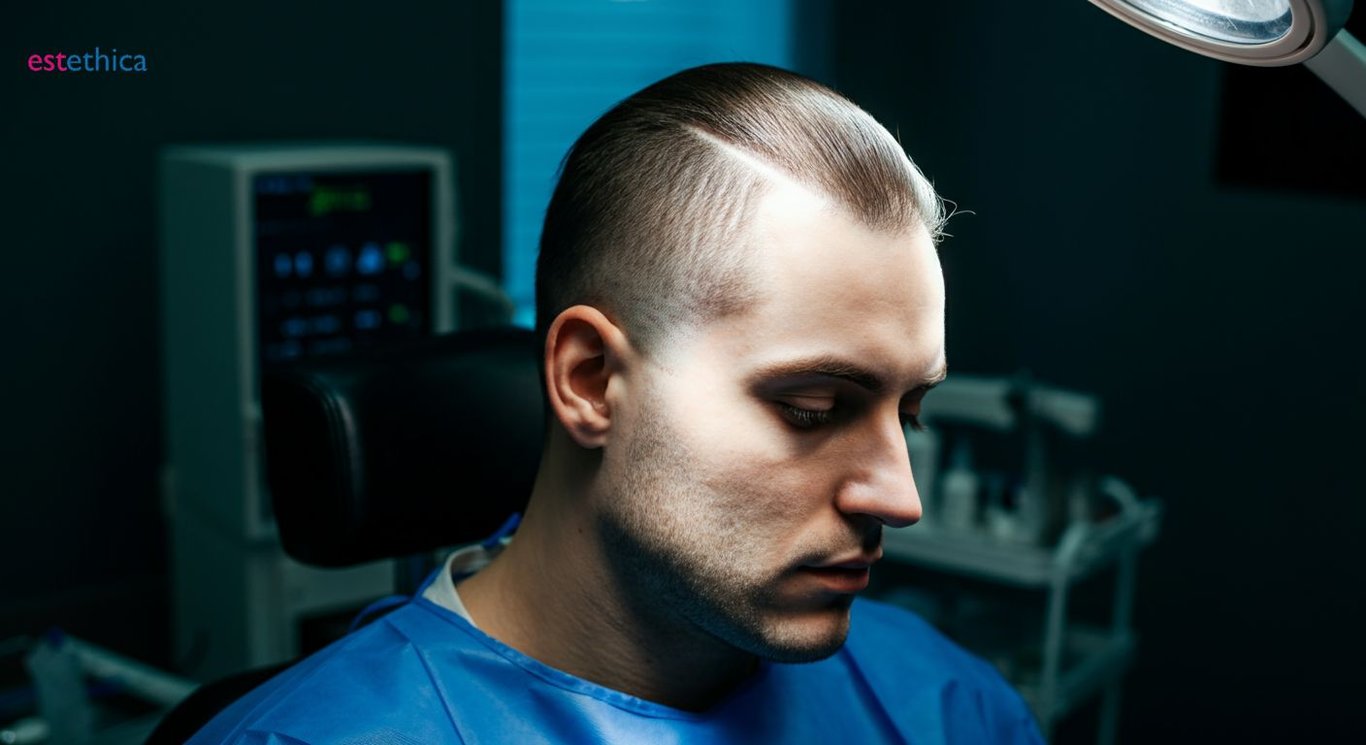Unlocking Hair Transplant Secrets: What You Need to Know
Uncover the secrets of successful hair transplants and learn how to prepare effectively for enduring results.
Delving into the realm of hair transplantation reveals a complex, yet fascinating world where science meets aesthetics. More than just a cosmetic procedure, hair transplants have evolved to offer solutions that are both effective and long-lasting. As millions seek to restore not just their hair, but their confidence, understanding the intricacies of these procedures becomes crucial. This guide aims to unearth the facts and dispel myths surrounding hair transplants, offering a comprehensive overview for anyone considering this journey.
Understanding Hair Transplantation: A Comprehensive Guide
Exploring Advanced Hair Transplant Techniques
Hair transplant techniques such as Direct Hair Implantation (DHI) and Follicular Unit Extraction (FUE) stand at the forefront of cosmetic surgery advancements. These methods not only offer different approaches but cater to the specific needs and conditions of each individual. DHI, for example, bypasses the need for incisions, thus reducing healing time and enhancing comfort post-operation. FUE, on the other hand, is recognized for its precision, using fine tools to extract and implant hair follicles with minimal scarring. Both techniques strive for natural results by mimicking the natural hair growth patterns and preserving the existing hair architecture. Thus, understanding these methodologies is pivotal for achieving desired outcomes and ensuring patient satisfaction.
Key Benefits of Modern Hair Transplant Techniques
- Minimal scarring with FUE, enhancing aesthetic outcomes.
- Reduced healing time with DHI, improving patient comfort.
- Natural-looking results by preserving hair architecture.
These benefits highlight the advancements in hair transplant techniques, making them more appealing to those seeking hair restoration solutions.
Steps in the Hair Transplant Process
- Consultation to assess individual needs and determine the best technique.
- Extraction of hair follicles using precise tools for minimal damage.
- Implantation of follicles to mimic natural hair growth patterns.
Understanding these steps can help individuals prepare for the procedure and set realistic expectations for the outcomes.
For more insights into achieving successful hair transplant results, visit Unlocking Hair Transplant Success: Expert Insights.

How Hair Transplant Surgery Works: Step-by-Step Insights
Innovative Tools and Techniques in Hair Transplant Surgery
Hair transplant surgery has evolved significantly with the introduction of advanced tools and techniques. One such innovation is the use of optivizor glasses, which provide surgeons with enhanced precision during the implantation phase. This technology ensures that each follicle is placed accurately, promoting natural hair growth patterns. Additionally, the Multi-Implanter tool allows for the swift placement of follicles, reducing the overall operation time and minimizing patient discomfort. These advancements are crucial in maximizing follicle survival rates and achieving aesthetically pleasing results.
Key Phases of Hair Transplant Surgery
- Comprehensive scalp evaluation to identify suitable donor sites.
- Meticulous extraction of follicles, ensuring minimal damage.
- Seamless implantation using advanced tools for natural results.
Each phase is designed to ensure the highest quality of care and optimal outcomes for patients seeking hair restoration solutions.
Advantages of Advanced Hair Transplant Techniques
- Enhanced precision with optivizor glasses, improving implantation accuracy.
- Reduced operation time with the Multi-Implanter, increasing patient comfort.
- Higher follicle survival rates, leading to better long-term results.
These advantages highlight the importance of utilizing cutting-edge technology in hair transplant surgery, ensuring both efficiency and effectiveness in the restoration process.

Is Hair Transplant Permanent? Debunking Myths and Facts
Understanding the Longevity of Hair Transplants
Hair transplants, particularly those using advanced techniques like Safir FUE, offer promising long-term results. This method utilizes finer pen tools, which minimize scalp trauma and promote quicker recovery, leading to robust hair growth. However, the permanence of a hair transplant is not solely dependent on the technique used. Individual post-surgery care is crucial in maintaining the vitality of transplanted hair. By adhering to prescribed care routines and avoiding harsh treatments, patients can significantly enhance the longevity of their hair restoration.
Factors Influencing Hair Transplant Success
- Technique used, such as Safir FUE, which minimizes scalp trauma.
- Post-surgery care, including following prescribed routines.
- Avoidance of harsh treatments to maintain hair vitality.
These factors collectively contribute to the success and permanence of hair transplants, ensuring patients enjoy long-term benefits.
Steps to Ensure Long-Lasting Results
- Follow a detailed post-operative care plan provided by your surgeon.
- Use recommended hair care products to support hair health.
- Regularly consult with your hair restoration specialist for ongoing guidance.
By taking these steps, individuals can maximize the longevity of their hair transplant results, enjoying a fuller head of hair for years to come.

Preparing for Hair Transplant: Essential Tips for Success
Optimizing Health for Hair Transplant Surgery
Preparation is key to the success of any surgical procedure, and hair transplants are no exception. Prospective patients should focus on optimizing their health through balanced nutrition and adequate hydration. A diet rich in vitamins and minerals supports hair health and boosts the body's healing capabilities. Additionally, consulting with specialists about pre-operative care, such as scalp massage techniques and the avoidance of specific medications, can set the foundation for a smooth operation. For instance, avoiding blood thinners can reduce the risk of excessive bleeding during surgery. These steps are crucial in ensuring a successful hair transplant experience.
Pre-Operative Care Checklist
- Maintain a balanced diet rich in vitamins and minerals.
- Stay hydrated to support overall health and recovery.
- Consult specialists about specific pre-operative care practices.
Adhering to these guidelines can significantly enhance the outcomes of hair transplant surgery.
Post-Operative Care for Optimal Results
- Use recommended topical solutions to promote healing.
- Engage in low-impact activities to reduce stress on the scalp.
- Follow a structured regimen to ensure sustained results.
Post-operative care is equally critical; it's advisable to adhere to a regimen that promotes healing, such as using recommended topical solutions and participating in low-impact activities that reduce stress on the scalp. These precautions play a vital role in ensuring both immediate recovery and sustained results.
Innovative Hair Transplant Techniques: DHI and FUE
Comprehensive Care for Long-Lasting Hair Transplant Results
Frequently Asked Questions
What is a hair transplant and how does it work?
Is hair transplant surgery permanent?
How should I prepare for a hair transplant?
What are the benefits of modern hair transplant techniques?
What post-operative care is necessary for optimal hair transplant results?
Discover the art of 'Healthy Beauty' with estethica's expert care. Call now for your free consultation and step into a world of confidence and elegance.
📞 Speak with Our Specialists Today!